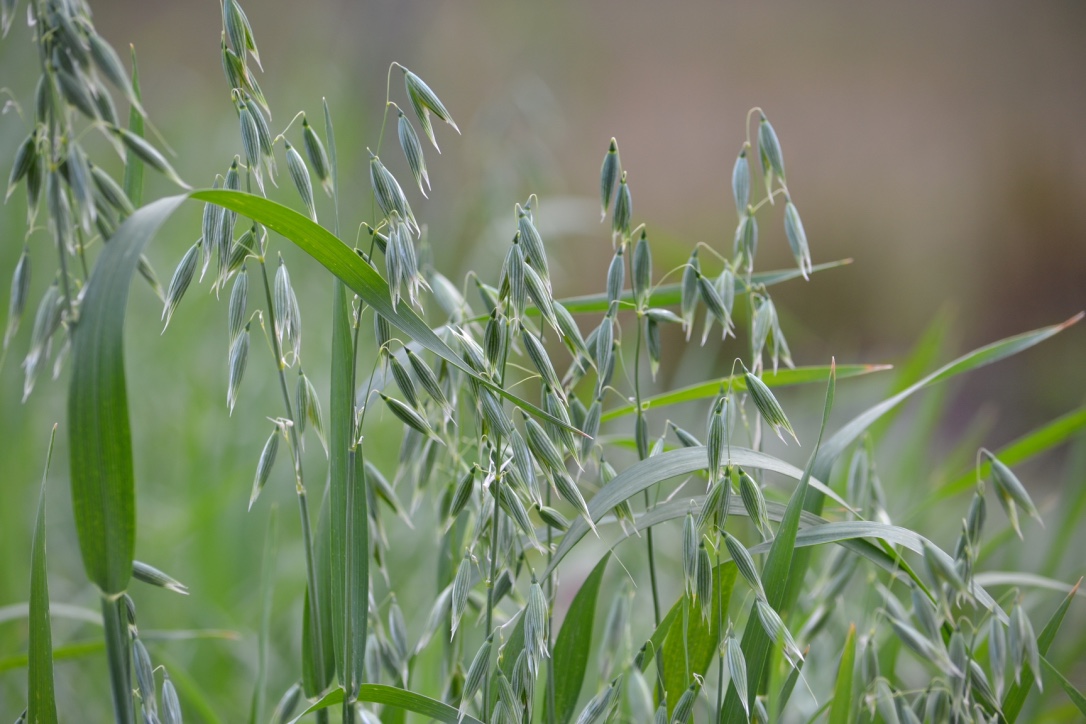
3 Easy Herbs to Grow From Seed
Tuning in to the cycle of the seasons is an integral part of wellness, as our connection to the earth roots and nourishes us in myriad ways. I revel in the cozy cocoon and silence of winter after living out loud and hot in the summer and pushing through the ramped up pace of back-to-school in the fall and the frenetic holiday season. Truth be told, with such a mild, noncommittal winter this year in New England, I am not quite done with cozy. However, I have no doubt that once the temperatures warm, the birds return, and the spring peepers greet the evenings, I will be decidedly ready for the lively energy of spring. As an herbalist and gardener, this means spring planting.
Each year as my perennial herbs erupt in a flush of new growth, I literally exclaim with delight, as if greeting old, treasured friends—and that is exactly how I feel about them! Thank goodness for these hardy plants who weather the winters with me. But there are also more tender annual herbs that I simply cannot live without in my garden each year—those that I must start from seed each spring. Below, I’ll introduce you to some herbs I grow from seed each year and get you started with 3 easy herbs to start growing right now.
3 Easy Herbs to Grow from Seed
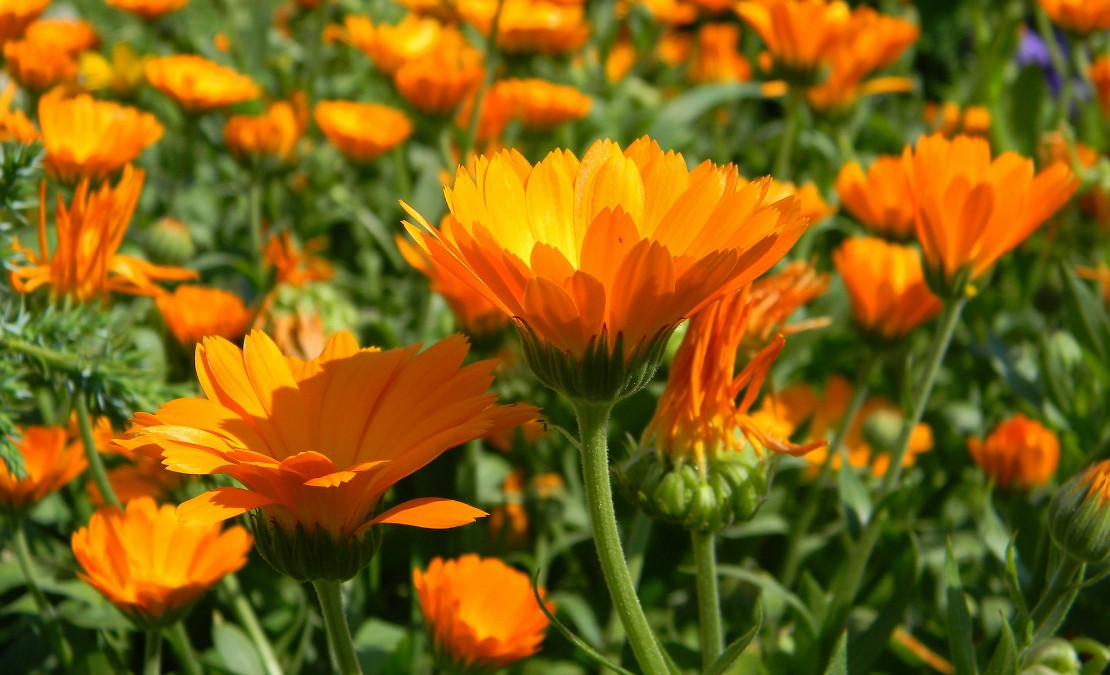
1. Calendula (Calendula officinalis)
Calendula is such a satisfyingly easy herb to grow from seed. The seeds look like fat little hedgehogs so they are immensely fun to plant, and they germinate fairly easily. Calendula can be direct seeded in the garden in spring and can be grown in pots as well. Seedlings can also be started indoors and transplanted outdoors to get a jump on things. (If you do choose to start seeds indoors, take a look at these tips on seed starting and transplanting.)
Seeds should be planted ¼ – ½ inch deep or covered with a thin layer of potting soil (Carpenter & Carpenter, 2015) and will sprout in 1-2 weeks (Hartung, 2011). Calendula plants like to grow about 1 foot apart in full sun and a rich, well-drained soil (Carpenter & Carpenter, 2015).
Calendula will bloom prolifically throughout summer and fall as long as you keep harvesting or deadheading the blossoms—until a hard autumn frost. Pick the blossoms once the morning’s dew has dried and the flowers are fully open, and dry on a screen with good air circulation or even in a food dehydrator on a low setting to thoroughly dry the thick flowers.
Calendula does self sow, but the new seedlings will not all be the same variety as their parents (Carpenter & Carpenter, 2015).
Fresh calendula petals can be used in teas and salads or extracted in a tincture. If infusing in oil, let the blossoms dry for a day or two to remove some of the moisture. Learn more about the uses of Calendula here and get some of our favorite Calendula recipes and remedies here!
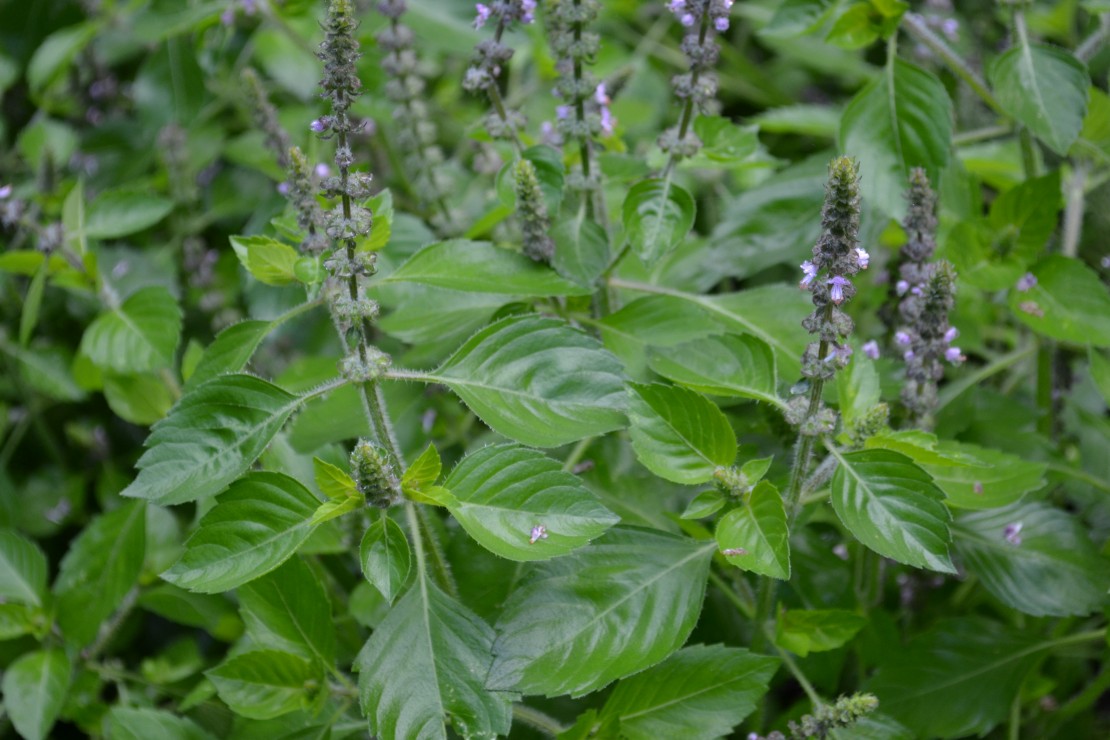
2. Holy Basil (Ocimum sanctum, O. gratissimum)
Dried holy basil is lovely, but in my mind it doesn’t hold a candle to the experience of the fresh plant. The entire plant has an intoxicating sweet scent that invites human and bee admirers alike—I could sit in a patch all day long, but usually settle for taking a moment to sweep my hands through the tulsi patch and deeply inhale its fragrance. I could wax on and on about this plant and its uses! I do so a bit here, and also describe the different species of holy basil you can choose from.
Holy basil seeds are pretty small so some patience is needed when planting, but it’s well worth it as it is a rewarding herb to grow from seed. You can direct seed holy basil in the garden once the soil has thoroughly warmed or start seeds indoors in spring and set transplants after danger of frost has passed—just like with culinary basil. Holy basil is also happy to grow in pots.
Seeds should be covered with a thin layer of garden soil or potting soil and will sprout in about 1 week. However, it can take up to 3 weeks (Carpenter & Carpenter, 2015), so don’t lose heart! Holy basil likes to grow about 1 foot apart in full sun and a rich soil with plenty of moisture (Carpenter & Carpenter, 2015).
Holy basil produces pinkish-purple blossoms that are pure ambrosia to the bees! You can harvest before bloom, but I typically wait until they are blooming and then cut the upper portion of the plant. Leave at least 6 inches of leafy growth so the plant can produce another flush of tender growth (Carpenter & Carpenter, 2015). With careful cutting and allowing regrowth, multiple harvests are possible. However, this plant is quite tender and sensitive to frost (again, just like culinary basil), so if a frost is forecast make sure to get your last harvest in before nightfall!
Dry holy basil on a screen with good air circulation or even in a food dehydrator on a very low setting so as not to volatilize the fragrant aromatic compounds.
Holy basil self seeds itself, as I happily discovered the year after I first planted it, and seeds are also fun to collect and save for the next year’s annual herbs to grow from seed.
Fresh holy basil makes an amazing glycerite or a tincture, and of course can also be used in teas. Experiment by throwing a few leaves in salads or pestos!
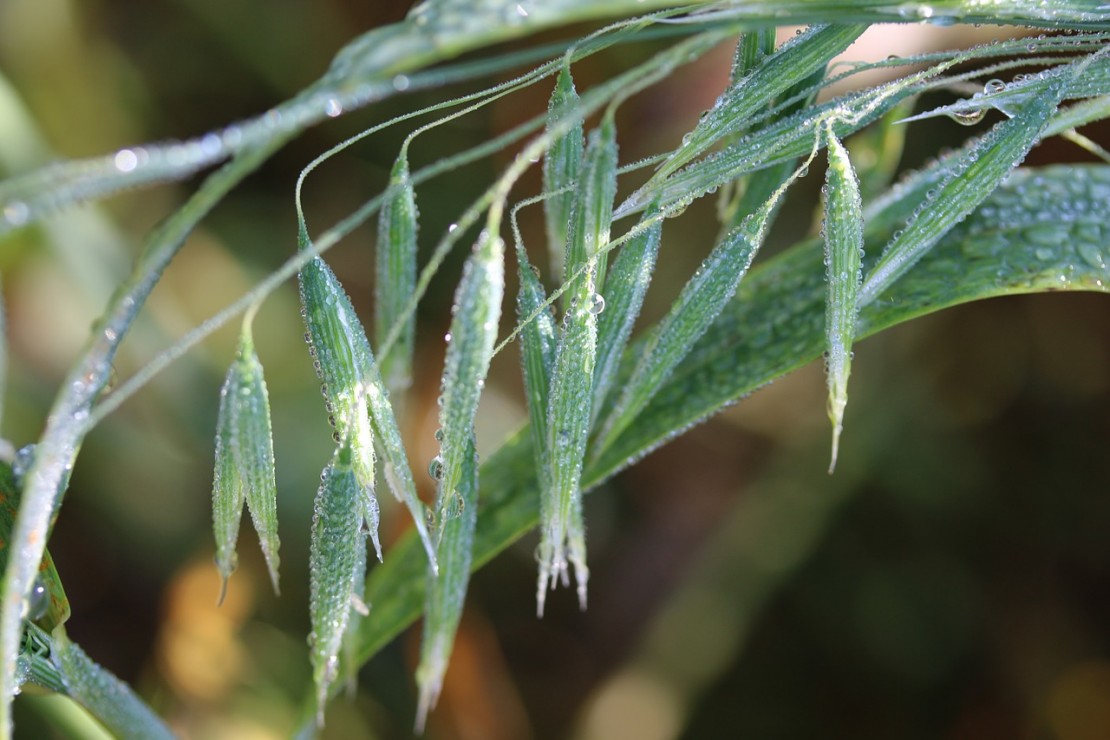
3. Milky Oats (Avena sativa)
Speaking of easy herbs to grow from seed, we grow large patches of milky oats each year as a cover crop on some garden beds and for harvest in others. It’s easy to grow enough quantity to use as our primary nervous system tonic throughout the year. Get to know a bit about the benefits of milky oats here and here!
Milky oat seeds look like an unrolled oat. Go figure! They can be direct seeded in mid to late spring. Rake garden soil to loosen, broadcast the oat seeds by hand, lightly rake them into the fluffy soil to mostly cover the seeds, and then keep moist during the germination process. Oats like full sun and a fertile, well-drained soil (Carpenter & Carpenter, 2015). Note they will grow to approximately 4 feet tall! However, they can grow nicely in large pots.
Milky oats are harvested in mid-July when—for just a week—they emit a white sap upon squeezing (this is before they harden into the more familiar oat grain). I harvest by stripping them from the stalk and tincture the fresh oats immediately to preserve their constituents, and also dry some on a screen or in a food dehydrator because they are so pretty in tea blends. I also harvest the stalks once the oats are removed, dry them, and chop them up to enjoy in teas.
Note that Avena sativa is sold as cat grass in pet stores, so you can plant little pots of oats for kitty to enjoy as well!
Got the gardening itch? Here are 5 more easy herbs to grow, and some reflections from an herb gardener to inspire you (and make you giggle a bit). Feeling even more ambitious? Read our tips for making an herb garden plan and designing an herb garden.
Happy sowing!
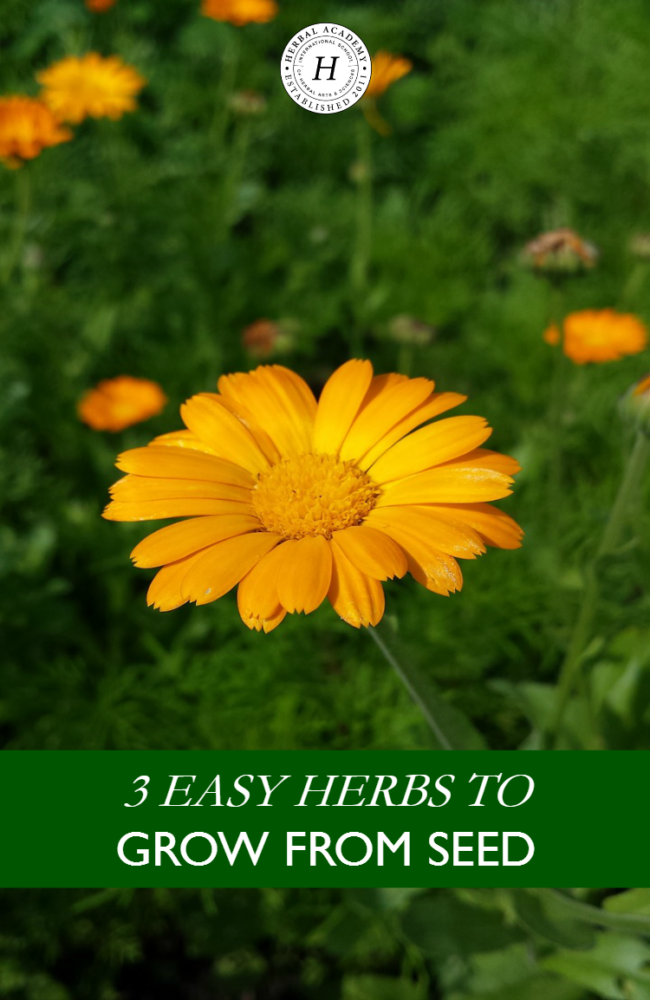
REFERENCES
Carpenter, J. & Carpenter, M. (2015). The organic medicinal herb farmer. White River Junction, VT: Chelsea Green Publishing.
Hartung, T. (2011). Homegrown herbs: A complete guide to growing, using, and enjoying more than 100 herbs. North Adams, MA: Storey Publishing.








